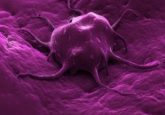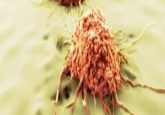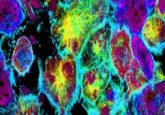Melanoma: Researchers identify key mutation which suppresses the immune system

A group of researchers from the University of California, Irvine (CA, USA) have identified a mutation which enables melanoma tumor cells to remain undetected by the immune system. The study published recently in Cell Reports may lead to the development of improved immunotherapies.
Melanomas accumulate a high burden of mutations that could potentially generate neoantigens, yet surprisingly these tumors are able to suppress the immune response to facilitate continued growth.
In this study, the team demonstrated that there are mutations within tumor cells themselves that allow them to suppress the T cell immune response and recruit macrophages known to promote tumor growth.
Senior author Anand K Ganesan from the University of California, Irvine commented: “Cancers develop not only because they acquire mutations that promote their growth but also because they are able to prevent the immune system from recognizing and removing them.”
The researchers identified one of these mutations as a protein termed ATR, which usually recognizes and repairs UV-induced DNA damage and is required for cellular proliferation.
The researchers demonstrated that ATR mutant tumors exhibit both the accumulation of multiple mutations and the altered expression of inflammatory genes, resulting in decreased T cell recruitment and increased recruitment of macrophages known to spur tumor invasion.
Overall, the researchers believe their findings may help elucidate how melanoma tumors modulate the immune response and aid the development of better immunotherapies.
Ganesan concluded: “Understanding how developing tumors interact with the immune system to promote their continued growth is a key to developing effective immunotherapies.”
Sources: Chen CF, Ruiz-Vega R, Vasudeva P et al; ATR mutations promote the growth of melanoma tumors by modulating the immune microenvironment DOI: http://dx.doi.org/10.1016/j.celrep.2017.02.040 Cell Reports (2017); Science Daily press release www.sciencedaily.com/releases/2017/03/170307131128.htm




